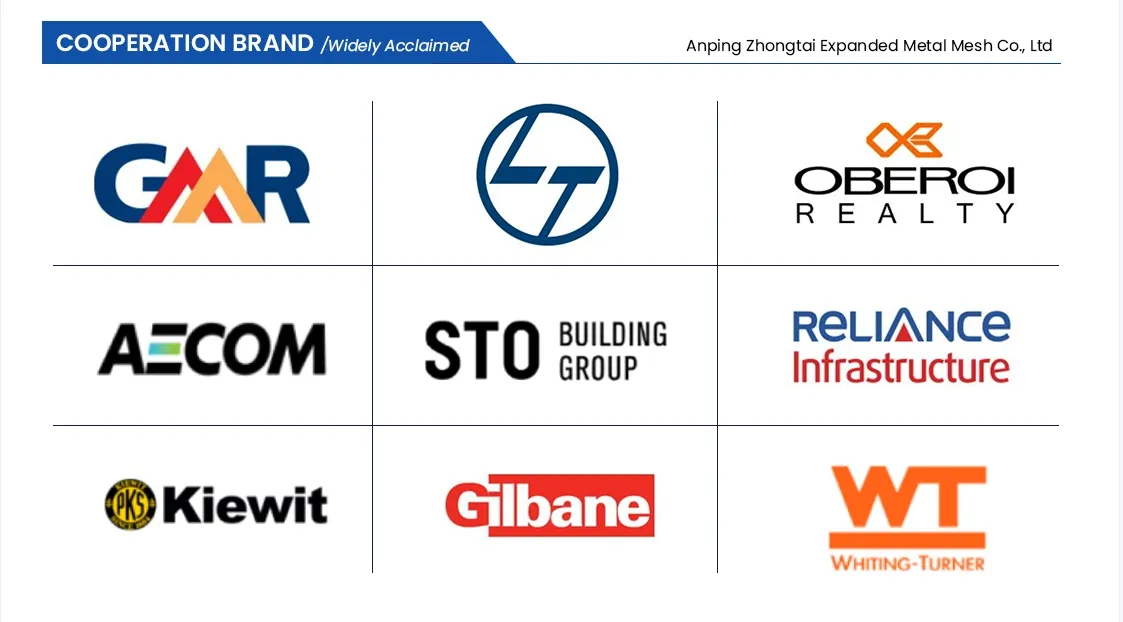Understanding Steel Bar Grating Applications and Benefits
Steel bar grating, an essential material in various industrial and commercial applications, is widely recognized for its durability, strength, and versatility. Made from heavy-duty steel, this type of grating consists of a series of parallel bars that are joined together at regular intervals by perpendicular cross bars, creating a grid-like structure. This design allows for excellent drainage, airflow, and light penetration while providing a sturdy walking surface.
One of the primary applications of steel bar grating is in flooring systems. Many industries, such as manufacturing, construction, and food processing, utilize steel grating for walkways, platforms, and work areas. Its robust construction can support heavy loads, making it suitable for environments where heavy machinery and foot traffic coexist. Moreover, the open design of steel bar grating helps reduce the accumulation of debris and water, minimizing slip hazards and improving safety.
In addition to flooring, steel bar grating is commonly used for stairways and ramps. The inherent strength of the material can withstand the stresses and strains associated with frequent use, while its non-slip surface ensures safety for users. Furthermore, with the ability to customize patterns and sizes, steel grating can be tailored to fit specific architectural requirements and aesthetic preferences, enhancing the overall design of any project.
Another significant benefit of steel bar grating is its durability and longevity. When properly maintained, this material can last for decades, even in harsh environmental conditions. Steel grating is resistant to corrosion and degradation, especially when treated with protective coatings or galvanized finishes. This resistance to wear and tear makes it an economical choice, as it reduces the need for frequent replacements or repairs.
steel bar grating

In industrial settings, steel bar grating also plays a crucial role in safety and compliance. Many workplaces are subject to strict regulations regarding safety standards, especially those involving hazardous materials or heavy machinery. Installing steel grating can help businesses meet these safety requirements by providing a reliable surface that can withstand spills and accidents, thus minimizing risks to employees.
Marine and offshore applications also benefit significantly from steel bar grating. Its design allows for easy drainage of water and debris, reducing the risk of slipping in wet conditions—a common hazard in these environments. Additionally, its resistance to saltwater corrosion further enhances its suitability for marine applications, where moisture and harsh weather conditions prevail.
Furthermore, the ease of installation and low maintenance requirements of steel bar grating make it an attractive option for many projects. It can be quickly laid down and secured with minimal tools, allowing for efficient project timelines. Additionally, the open design means that cleaning is straightforward, with debris easily swept away or washed off.
In conclusion, steel bar grating is an incredibly versatile and beneficial material used across a wide range of industries. Its strength, durability, and safety features make it an ideal choice for flooring, stairways, and industrial applications. As businesses continue to prioritize safety and efficiency, steel bar grating will remain a fundamental component in creating functional, safe, and accessible environments. Whether in manufacturing plants or public walkways, the presence of steel bar grating speaks volumes about the commitment to quality and safety standards.
-
The Best Metal Mesh Solutions: Expanded Aluminum Metal vs. Expanded Stainless Steel Metal
NewsSep.10,2024
-
Round Perforated Sheets vs. Hexagonal Perforated Sheets vs. Embossed Perforated Sheet Metal
NewsSep.10,2024
-
Perforated Metal Sheets
NewsSep.10,2024
-
Experience The Excellence Of Stainless Steel Grating
NewsSep.10,2024
-
Discover the Versatility Of Metal Mesh Expanded Forming Machines
NewsSep.10,2024
-
Discover The Advantages Of Steel Grating For Sale
NewsSep.10,2024
Subscribe now!
Stay up to date with the latest on Fry Steeland industry news.

